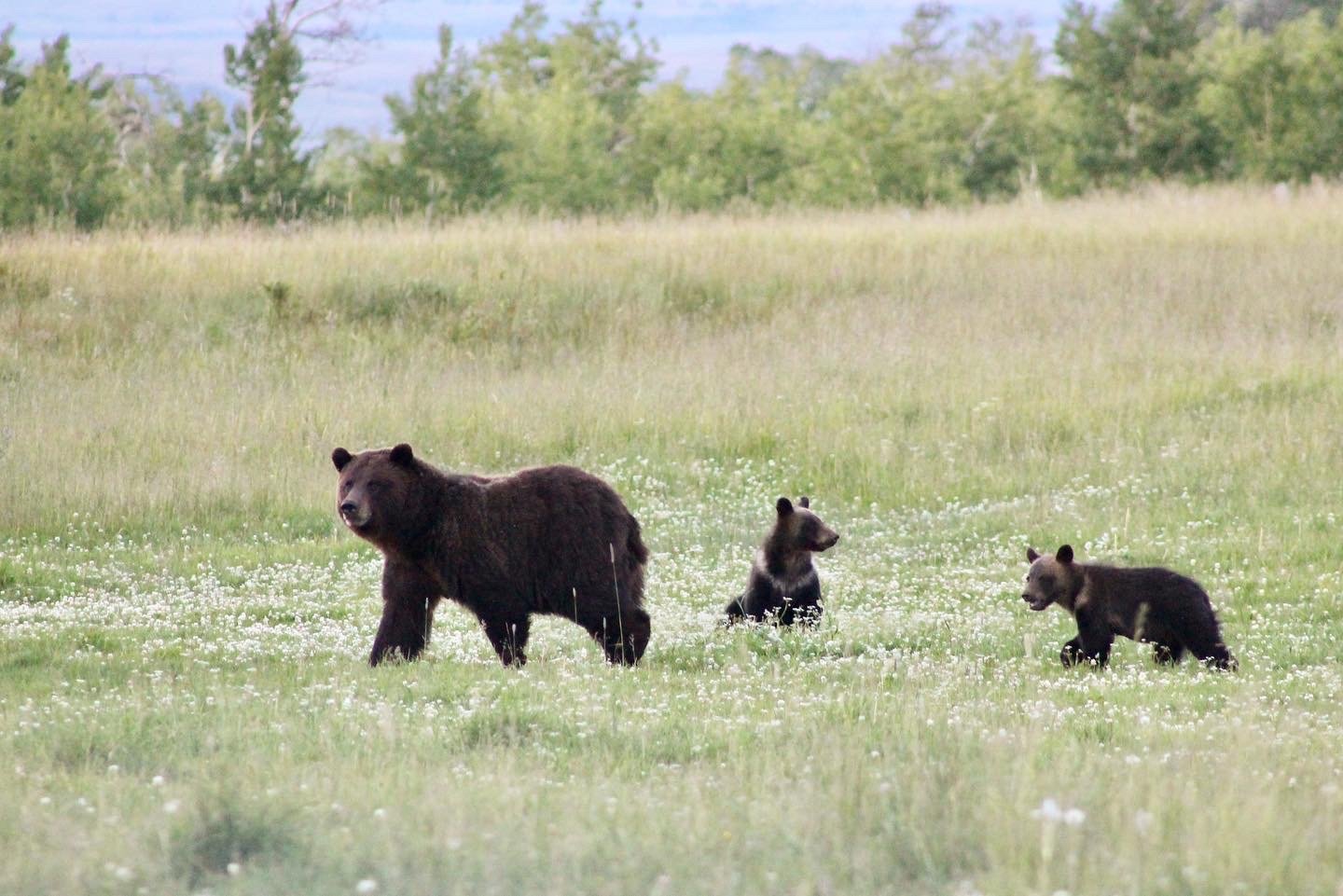Update
I have been riding the two herds in Forest Service permit land twice a week, as well as checking herds up high at Grizzly Creek and Anderson ranch. This has kept me quite busy and allowed me to cover some serious ground and see lots of different country. We have had our first depredation of the season in the basin, and since bears are in the beginning stages of hyperphagia, this increase in grizzly predation is expected. Every year there is a predictable amount of loss that simply will happen due to ranching in a dense predator area, some of those carcasses will be found, some may not be due to the vast area we have to cover. The first predator related carcass of the year was a calf that had wounds to the head, and I also found a relatively fresh calf carcass while riding in the FS permit a week earlier. By the time I got to the site, most of the carcass was eaten and there were turkey vultures and bear scat and urine in the area. Since I was able to alert the USDA Willdlife Services Biologist, Jim Rost relatively quickly, he was able to come out and determine that the cause of death was not predator related. Range riding helps us A) reduce depredation through predictable movement on the landscape and observation of changing predator or herd behavior B) find carcasses sooner for a biologist to determine cause of death/reimburse producer.
Saddling up to check cattle at sunrise
Along with range riding, myself and AJ, an undergraduate at Harvard, have been working on brewing and applying compost tea to weed infested areas. Compost tea is composed of vermicast (a rich compost soil made entirely by red wriggler worms and their droppings), fermented plant juices, mineral, and based on soil testing in weeded areas, either Calcium (houndstongue patches) or Boric acid (hoary alyssum patches). The idea behind applying this compost tea to the affected areas is to give the native plants an advantage in competing for the soil, and along with weed abatement gives native plants a chance to cover the ground again. We will continue to work on weed management throughout the season as a regular duty of being a steward of the land.
Grizzly bear ecology and ranching
Compost tea brewing
In the teabag: vermicast and fermented mugwort
I mentioned that we aim to utilize ecological knowledge of the basin to our advantage when deciding how to best manage the cattle. It is important to be aware of that we are bringing a domestic animal into a highly seasonal and wild place. With prior knowledge of seasonal behavior of the wildlife in this region, we can plan cattle management more effectively and allow for better coexistence. For example, grizzly bears are highly seasonal animals that possess physiology and behavior that changes at throughout the year. They hibernate in the winter, relying solely on fat stores that were obtained from the previous active season, and maintain a several hundred-pound body that hovers around 30-34 C without food for up to 6 months at a time. When they emerge in the spring, they are opportunistic omnivores that will forage for any available food resources they can such as winterkills, emerging grasses/sedges, and just about anything else they can find. In recent years, some grizzly bears have shifted their spring focus to prioritizing hunting elk calves. Since predation is becoming a larger part of GYA grizzly bear behavior, it is helpful for cattle producers to calve later each year to make sure that either calves are larger when entering grazing land in the basin, or that cows are calving at the same time as the elk (and not before, there is safety in numbers----a great example is wildebeest calving in Africa).
Moving cattle up to the grazing permit on a rainy day
As summer progresses, grizzly behavior and physiology begins to shift dramatically, almost as if a switch has been flipped. This switch refers to hyperphagia, a time when grizzly appetites increase exponentially in order to increase body fat percentages to sufficient levels to survive hibernation (fun fact: grizzly sows will be bred in early summer but will not implant an embryo until they have sufficient body fat in the late Fall-leading to a short two-month gestation period followed by a hibernation birth!). During August and September these hyperphagic bears begin to come to lower elevations in their intense search for food. With the loss of some of their natural food resources such as white bark pine seed and cutthroat trout; carraway root (invasive plant found throughout grazing areas on the ranches here in the basin), and cattle become more appealing options. Since we know this predictable bear behavior, it is important during this time to be proactive by increasing human presence on the landscape and keeping a closer eye on the herds and wildlife behavior. It is extremely important to find and report carcasses in a timely manner, as we do not want to attract other bears or allow for repeat offenders to continuously return to the herd without understanding there are humans watching over.
A grizzly bear is captured on a trail camera walking through a creek crossing
Both grizzly bears and cattle are resilient animals, and naturally there will always be some level of conflict. The goal of things like range riding are to collect information while simultaneously trying to minimize conflict through being physically present and reading the landscape and animals. I frequently get asked how I feel about riding with bears, and how often I see them. That answer varies as sometimes I go a week without seeing a bear, and some days I see several. I also see physical evidence such as tracks, scat, or other sign, and instinctually can feel bear activity in an area. As a trained biologist, it is hard for me to say that energy and non-physical things drive my decision making out there, but they frequently do. I both remain observational about physical, tangible things, but I am also acutely aware of feelings or instincts not only from myself, but from the animals I take with me, wildlife, or the weather. I think that remaining observational, curious, and listening to your gut are all necessary traits to being able to range ride in predator country. Overall, bear activity is ramping up here in the basin, and I am looking forward to continuing to range ride and finish out the cattle season with as little conflict as possible.
A sow with two COY’s (cubs of the year) forages for caraway root in the evening
Ellery Vincent
2023 Range Rider
ellery.vincent@wsu.edu






